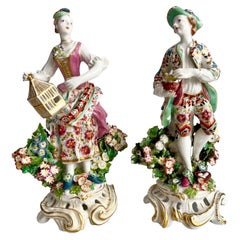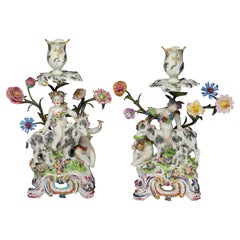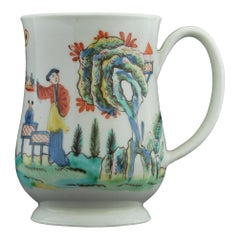Questions & Answers
Our trusted network of 1stDibs sellers answer common questions
How can you tell the difference between hard and soft paste porcelain?
1 Answer

The best way to tell the difference between hard paste and soft paste porcelain is to look at a broken or chipped piece. Hard paste porcelain fractures are brittle and smooth, while soft paste porcelain fractures are chalky and break along the grain. On 1stDibs, find a selection of hard and soft paste porcelain pieces from top sellers around the world.
1stDibs ExpertApril 5, 2022
Related Questions
- What is a paste brooch?1 Answer
- What is antique paste jewelry?1 Answer
- What does paste mean in antique jewelry?1 Answer
- What is the difference between semi-porcelain and porcelain?1 Answer
- What is Lladró porcelain?1 Answer
Shop for Bow Porcelain on 1stDibs
Bow Pair of Porcelain Figures of Liberty & Matrimony, Rococo 1760-1764
By Bow Porcelain
Located in London, GB
This is a fabulous pair of figures of Liberty and Matrimony made by the Bow Porcelain factory between 1760 and 1764. These figures were a popular pair portraying marriage.
The bow...
Category
Antique 1760s English Rococo Figurative Sculptures
Materials
Porcelain
$2,960 Sale Price / set
20% Off
Free Shipping
Pair of Bocage Candlesticks, Putti and Goats. Bow 1766
By Bow Porcelain
Located in Melbourne, Victoria
A rare, possibly unique, pair of candlesticks in the form of putti, representing The Four Seasons. This is the pair pictured in Stonor’s book (#94); we’ve b...
Category
Antique Mid-18th Century English Rococo Porcelain
Materials
Porcelain
Tankard with Famille Rose Decoration, Bow C5145
By Bow Porcelain
Located in Melbourne, Victoria
Baluster-shaped tankard, decorated with a pattern taken form the Chinese, in the famille rose-verte palette. It is amusing to note how the house on a hill in the original has been me...
Category
Antique Mid-18th Century English Chinoiserie Porcelain
Materials
Porcelain
Antique 18th Century Bow English Porcelain Figure of a Flute Player
By Bow Porcelain
Located in Philadelphia, PA
An antique English porcelain figurine.
By Bow.
In the form of a boy clothed in 18th century garb and holding a flute.
We've noted losse...
Category
Antique 18th Century English Georgian Porcelain
Materials
Porcelain
Bow Porcelain Figure of Boy Putto on C-Scroll Base, Georgian circa 1760
By Bow Porcelain
Located in London, GB
This is a wonderful little figure of a boy or putto made by the Bow Porcelain factory in about 1760.
The Bow Porcelain Factory was one of the first potteries in Britain to make soft...
Category
Antique 1760s English Rococo Figurative Sculptures
Materials
Porcelain
$548 Sale Price
45% Off
Free Shipping
Bow Porcelain Figure of Juno with Eagle 'Jupiter', Rococo Ca 1765
By Bow Porcelain
Located in London, GB
This is a very rare and impressive large figure of Juno with an eagle, made by the Bow Porcelain factory in about 1765. This figure formed part of a series of the Four Elements, with...
Category
Antique 1760s English Rococo Figurative Sculptures
Materials
Porcelain
$2,400 Sale Price
20% Off
Free Shipping


